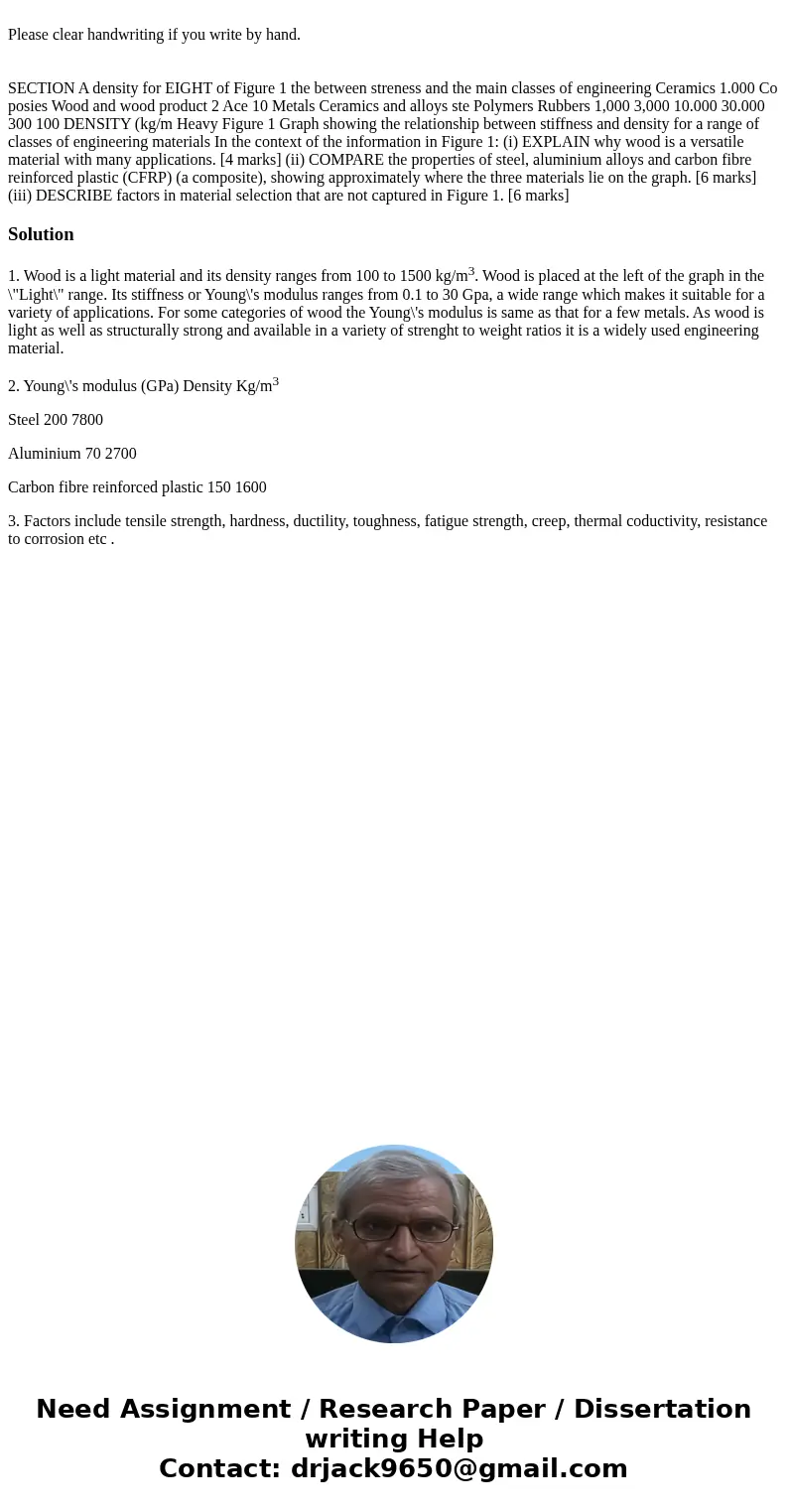Please clear handwriting if you write by hand SECTION A dens
Solution
1. Wood is a light material and its density ranges from 100 to 1500 kg/m3. Wood is placed at the left of the graph in the \"Light\" range. Its stiffness or Young\'s modulus ranges from 0.1 to 30 Gpa, a wide range which makes it suitable for a variety of applications. For some categories of wood the Young\'s modulus is same as that for a few metals. As wood is light as well as structurally strong and available in a variety of strenght to weight ratios it is a widely used engineering material.
2. Young\'s modulus (GPa) Density Kg/m3
Steel 200 7800
Aluminium 70 2700
Carbon fibre reinforced plastic 150 1600
3. Factors include tensile strength, hardness, ductility, toughness, fatigue strength, creep, thermal coductivity, resistance to corrosion etc .

 Homework Sourse
Homework Sourse